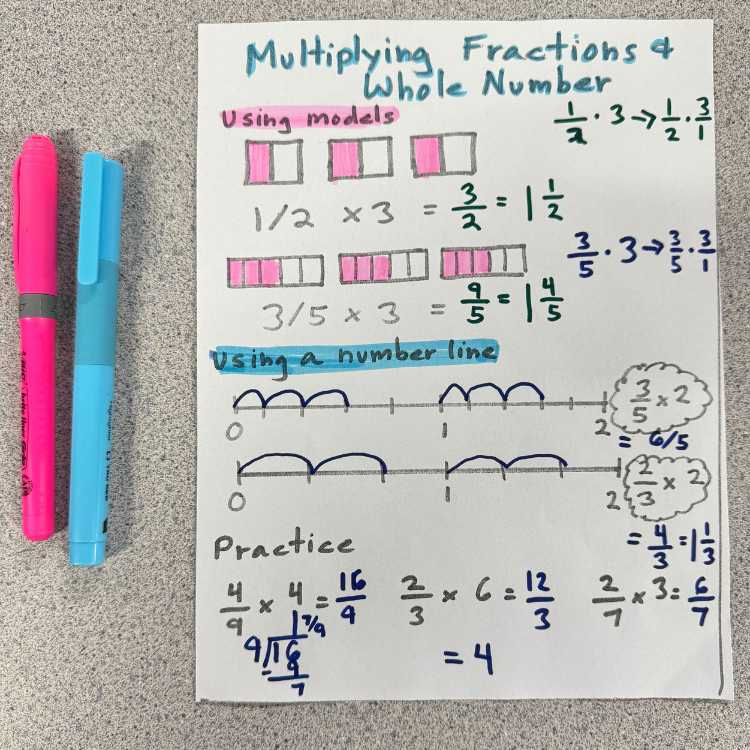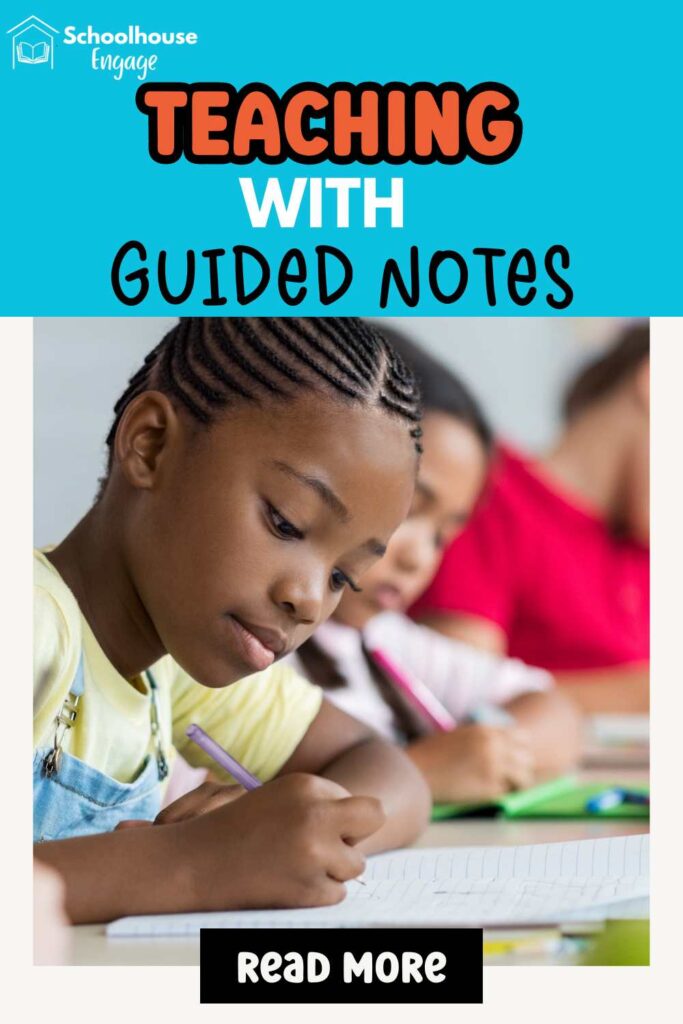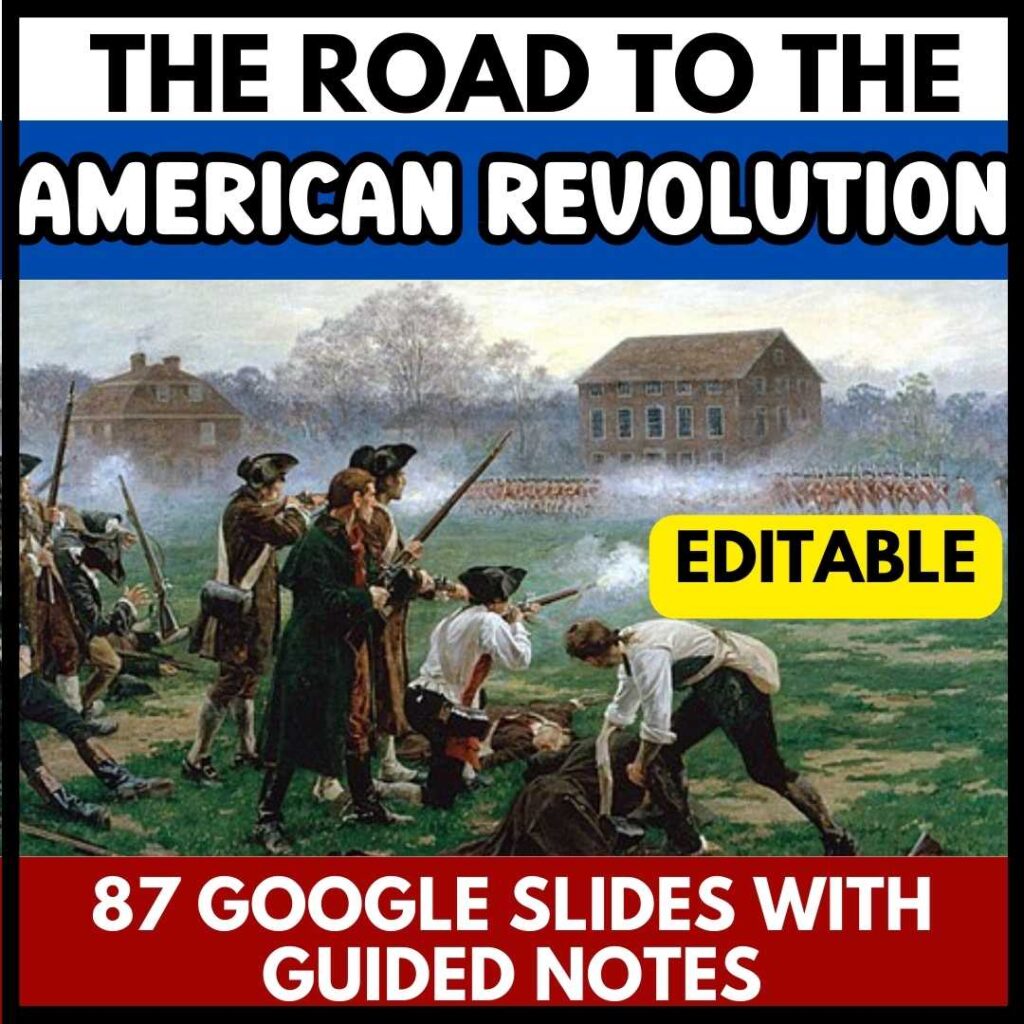When you teach, I can guarantee that many of your students are not listening. Don’t take it personally (I know I don’t); we are working with children. It happens. So what can you do to hold their attention and get them to listen? Guided notes are the answer!
What are Guided Notes?
When you are teaching and presenting a new topic, students complete guided notes.
If I am teaching a Social Studies topic, I use Google Slides or PowerPoint Presentation. A colorful presentation without too much text will hold your students’ attention.
If you are teaching in middle school or high school, the guided notes don’t need to mirror the notes in the presentation. But for younger students in upper-elementary, you want to have the same wording that is in the presentation so there is no confusion.
Guided notes can also be used in math. Use your board to explain the problems while students are completing the guided notes. A presentation isn’t required, but you will need to write up some problems that you will need to copy.

TPT has some incredible math guided notes already done for you. But if you are in a jam and need to make something quickly, you can just make your own.
Tips on Using Guided Notes
You want to make your presentation engaging. So here are a few tips to get the most out of your guided notes:
- Ask your students to highlight certain words
- Space out how many guided notes you give your students so there is no confusion about what notes they should be completing. For example, on day 1, only give out Day 1 notes, not a whole packet.
- Have your students save their notes. Either they put them in a 3-ring binder or they paste the notes into their Social Studies, Math, etc. notebook.
If you want tips on how to organize a Social Studies Notebook, please check out this blog post.

The Benefits of Guided Notes
Elementary students are not developmentally ready to take their own notes from any presentation. Guided notes that are short and sweet are the way to go.
I’ve found that if they are too lengthy, then students are spending all their time trying to complete the notes and their attention is not on the lesson itself.
Here is why you should use guided notes:
- Guided notes hold your students accountable for listening to your lesson because they need to pay attention to the presentation slides.
- Elementary students who aren’t able to take notes quickly benefit from guided notes with fill-in-the-blank cloze sentences.
- Cloze fill-in-the-blank notes allow your students to listen to what you say while having notes to refer to in the future.
- Students will reread the presentation slides looking for the correct word to complete their notes.
Don’t rush through the slides. Give your students time to write down the cloze fill-in-the-blank word as you walk around to make sure they are completing the notes correctly.
What to Include in Guided Notes
For Science or Social Studies Notes include:
- Write key information about your topic. Basically whatever it is that you want students to remember
- Important dates
- Vocabulary words
- Opinion questions (optional)

For math notes include:
- Steps to solve a problem
- Examples
- Visual models
- Guided practice problems
- Problems for students to work on independently

How to Create Guided Notes
If you are completing your own guided notes, you can just copy down some key details from your textbook book.
Don’t have a textbook? Then using an encyclopedia is a great reference. In the case of math, I would use some example problems from Khan Academy.
Using the chapter summaries is also a great place to start when creating guided notes for Social Studies or Science. You can also create handwritten notes with a few doodle images.
Make sure your guided notes have text boxes and images relating to the subject. You want your notes to be visually appealing with different headings.
Not the creative type? Try using a graphic design program like Canva.
Don’t want to deal with the headache of creating your own presentation and guided notes?
Check out my editable slides with guided notes for Early English Colonies and the Causes of the American Revolution.
You got this! Giselle


